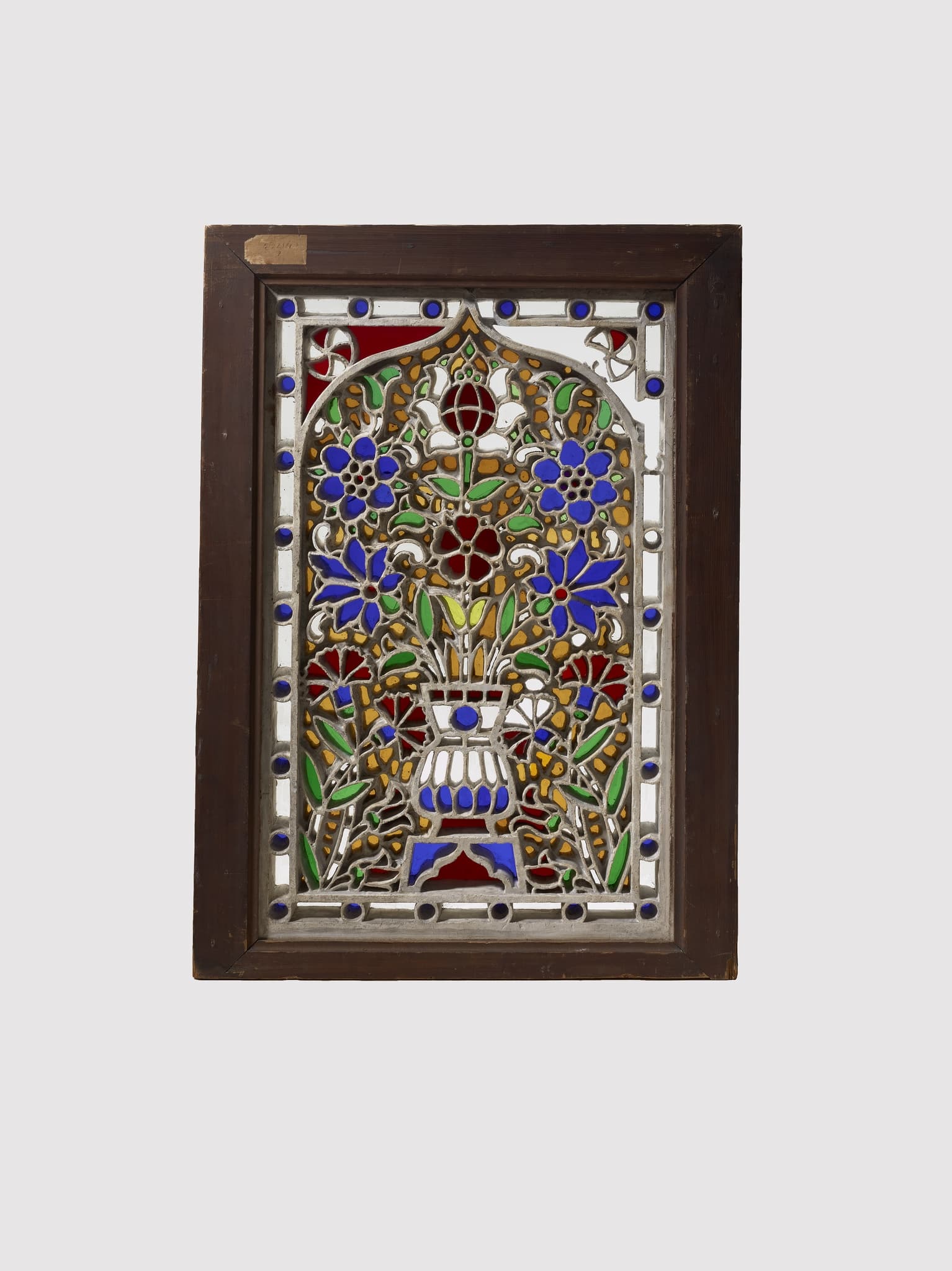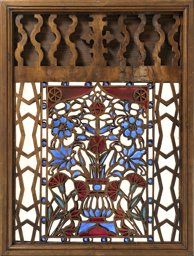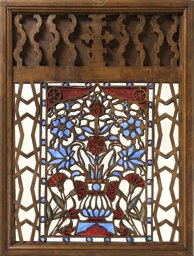This stucco and glass window corresponds iconographically to one of the standard types of qamarīyyāt widespread in Egypt during the Ottoman period. Windows with the flowers and vase motif have survived in several of the collections studied (see for instance IG_7, IG_166, IG_178, IG_255, IG_356). The motif recurs in Islamic arts and appears in numerous media, such as ceramics, wood panelling, wall paintings, textiles, and stucco and glass windows, and over a long period of time, in both sacred and profane contexts. The motif aroused the interest of Western artists and architects in the 19th century, as is attested by a significant number of book illustrations, sketches, and paintings (see for instance IG_43, IG_118, IG_149, IG_153, IG_437, IG_443, IG_461), as well as by the replicas of such windows installed in Arab-style interiors across Europe (IG_54–IG_59, IG_64, IG_431, IG_484–IG_487).
The window discussed here shows a traditional composition arranged along a central axis. However, the naturalistic, yet imprecise rendering of the flower species in the vase, as well as the unusual background decor, distinguish this example from Islamic stucco and glass windows with the same motif. As with the stylistically and technically related stucco and glass window MAK, 3606 (IG_360), we assume that the window was designed by a Western architect during the second half of the 19th century, when interest in Islamic ornament and stucco and glass windows was at its peak.
Regarding the place of production, it seems likely that the window was produced in Europe, possibly in Austria, according to the architect’s design, because the manufacturing technique of this window is only partially in line with that of stucco and glass windows made in Egypt and the Mahgreb: While the glass pieces are fixed on the back of the stucco panel in the traditional way, the latticework itself seems to have been made using the casting and not the carving technique which is commonly used to make qamarīyyāt and shamsīyyāt. The MAK collection holds four other replicas of stucco and glass windows (IG_360, IG_365, IG_367, IG_368), which were made in the same way and probably in the same workshop.
Owing to the lack of documentation, the original purpose of the window – be it for use in an Arab-style interior or for sale on the art market – and the date at which the window entered a museum collection are unknown. So far it can only be proven that the window formed part of the collection of the Orientalisches Museum in Vienna, founded in 1874 (from 1886 the k.k. Österreichisches Handelsmuseum). In 1907, it was transferred to the k.k. Österreichisches Museum für Kunst und Industrie (today the MAK – Museum für angewandte Kunst). The transfer was done on the initiative of Arthur von Scala (1845–1909), who left the k.k. Österreichisches Handelsmuseum in 1897 to become the new director of the k.k. Österreichisches Museum für Kunst und Industrie (Wieninger, 2012).
Like the stylistically and technically related stucco and glass window MAK, 3606 (IG_360), this window served as a direct model for the stucco and glass window (central panel 2) installed in the mashrabiyya of the Arab Room of the k.k. Österreichisches Museum für Kunst und Industrie (MAK, H 3358-4, IG_264). The mashrabiyya and the stucco and glass windows were designed by the Czech architects František Schmoranz (1845–1892) and Johann Machytka (1844–1887) between 1881 and 1883. The date of manufacture of the window discussed here can therefore be further narrowed down, as it must have been created before 1883.


